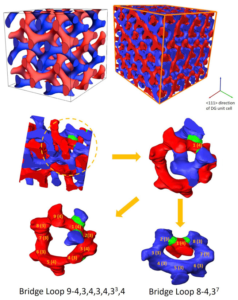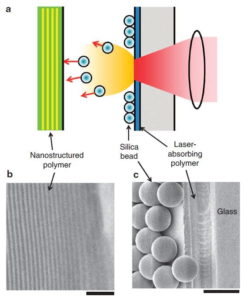
Thomas group is expert at morphological characterization and measurement of physical properties and establishment of structure-property relationships.

Thomas group is expert at morphological characterization and measurement of physical properties and establishment of structure-property relationships.

The system in our lab that enables extremely high rate change of materials is called Laser Induced Particle Impact Test (LIPIT). Projectile of micrometer size is placed on to a laser absorbing polymer and gold coated glass substrate. A IR laser pulse excites micro sized particle to a speed of at most 1km/s, which is achieved through rapid expansion of gold gas.

We have fabricated hypersonic crystals with band gaps in GHz frequency range using interference lithography and measure their phononic dispersion relation with Brillouin light scattering (BLS).

For example, a self-assembling gel consisting of alternating layers of two polymers, hydrophobic polystyrene and hydrophilic poly-2-vinyl-pyridine (P2VP) can rapidly change color in response to a range of stmuli, including temperature, humidity, and salt concentration. The photonic gel could lead to a variety of applications including sensors and display devices.